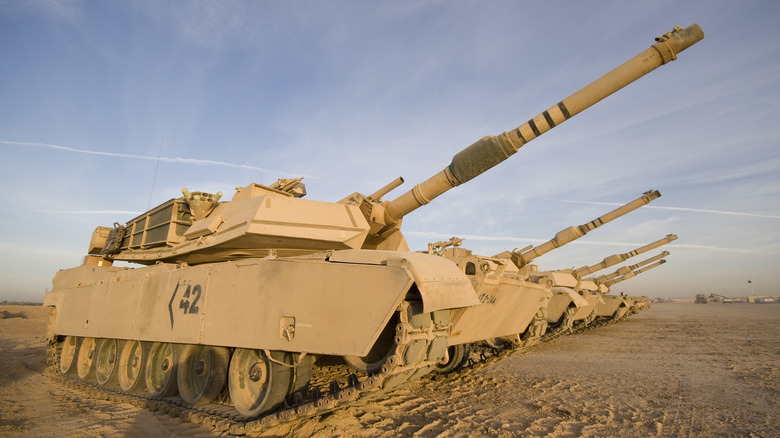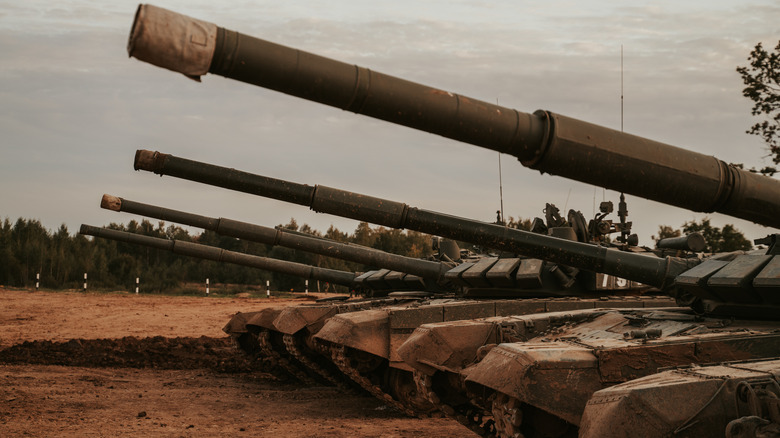What Is The Bulge On Tank Guns For?
The bulge found on the turret of a modern tank's main gun is actually a straightforward device that helps to expel the propellant gases released after each round is fired. These fumes are toxic, and if they were to leak back into the crew compartment, they could cause serious health issues for the soldiers operating the tank. Better known as bore evacuators (or fume extractors), these bulges really didn't start appearing until after World War II. It consists of a hollow round chamber that looks very much like a can attached to the main barrel of the gun.
When a round is fired, the propellant gases from the shell are pushed through holes in the barrel and into the evacuator. As that shell leaves the barrel, the hollow space in the bore evacuator creates a pressure differential (the pressure drops), and a vacuum effect then siphons the harmful gas, smoke, and other particulates out the end of the gun that results in the puff of smoke often seen leaving the end of the barrel.
Bore evacuators can be found on a vast number of different Main Battle Tank (MBT) cannons ranging from the standard 120-mm guns found on the U.S.'s formidable M1A2 Abrams, Germany's Leopard 2 MBT, and Britain's Challenger 2 to massive field artillery guns. They're even found worldwide on the 76mm anti-ship missile defense guns used on naval ships (i.e. corvettes and frigates), including Britain's Type 42 Sheffield class destroyer with its 4.5-inch Mark 8 naval gun.
Those bulges are essential to keep tank crews safe
Given the disparate use of bore evacuators, one might think the size of the gun — or whether it's equipped with an autoloader – is the main reason for its use, but it's not ... it's the pressure created when firing a round. Thus, low-pressure, low-velocity guns like the 90 mm found on the French Panhard AML-90 armored reconnaissance vehicle and the 76-mm gun on Britain's FV101 Scorpion (the fastest light tank in the world) won't need one. However, cannons with higher muzzle velocity create such sudden and immense pressure that they require a bore evacuator.
A few MBTs, like the French Army's AMX-30 and AMX-56 Leclerc, don't use one. These tanks use a system that blows air through the turret to remove the gasses after firing, similar to the systems used during World War II. After the war, the French inherited a number of 75-mm equipped German Panthers, so they were able to further enhance and develop that system to work in their modern tanks instead of resorting to a fume extractor system.
Likewise, large artillery guns such as the U.S. M110 self-propelled howitzer with its array of interchangeable high calibers don't need one because they're open to the air where the smoke and gasses can exit without issue. Furthermore, the Russian T14 Armata currently being used in the war in Ukraine also doesn't use a bore evacuator. That's because the gun compartment in this particular MBT is separate from the crew compartment, where removing smoke and gasses isn't needed to keep its crew safe.

